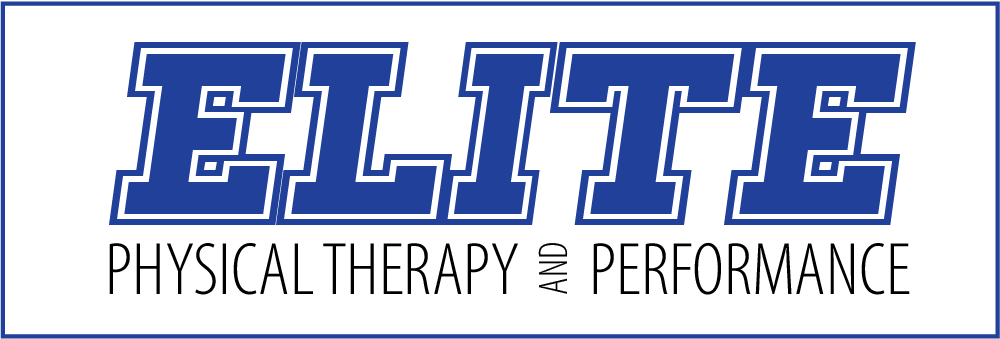Low Back Pain: Causes and How Physical Therapy Can Help
Got low back pain? You’re not alone. It’s one of the most common health complaints, affecting people of all ages. About 80% of adults will deal with it at some point in their lives. Sometimes it’s a short-lived annoyance, but for a lot of people, it’s a chronic issue that affects daily life, work, and even sleep.
The good news? We can help! Elite Physical Therapy can be a game changer when it comes to managing, reducing, and even preventing low back pain. Let’s take a look at some of the causes of low back pain and how physical therapy can help you feel better.
What Causes Low Back Pain?
There are several reasons why people experience low back pain. It’s often more than just “throwing out your back” – it’s usually related to one or more of the following causes:
1. Muscle Strain
This is probably the most common cause of low back pain. Straining a muscle (or several) in the lower back is often the result of lifting something heavy, twisting awkwardly, or even sitting or standing in one position for too long. The muscles get tight, inflamed, and sore.
2. Herniated Disc
Your spine is made up of a stack of vertebrae, with discs in between that act like cushions. If one of these discs gets damaged or “slips,” it can press on a nerve, causing sharp pain or numbness that can travel down your legs (a condition known as sciatica).
3. Arthritis
Osteoarthritis can affect the spine just like other joints. The cartilage that protects your joints wears down over time, causing stiffness, pain, and inflammation, especially in the lower back.
4. Degenerative Disc Disease
As we age, the discs in our spine naturally lose their cushioning and flexibility. This can lead to pain, especially if the discs start to shrink and the bones begin rubbing against each other.
5. Poor Posture or Sedentary Lifestyle
If you sit hunched over at a desk all day, or stand with bad posture, it can create long-term stress on your spine and muscles. Plus, sitting for too long without moving weakens the muscles that support your lower back, making you more prone to injury.
6. Injuries or Accidents
Sometimes, an unexpected fall, car accident, or sports injury can cause damage to your back. This kind of trauma can lead to muscle strains, herniated discs, or even fractures that cause pain and discomfort.
How Physical Therapy Can Help
The good news is that low back pain doesn’t have to become a lifelong problem. Elite Physical Therapy can play a major role in reducing pain, improving movement, and even preventing future issues. Here’s how:
1. Pain Relief
Step One: Let’s get you out of pain!
We use personalized techniques to help with this, including:
Manual Therapy: We use hands-on techniques like massage or gentle spinal manipulations to relieve tension in tight muscles and improve circulation.
Electrical Stimulation: Small electrical pulses can help block pain signals and reduce muscle spasms.
Heat and Cold Therapy: Ice packs or heating pads can help reduce inflammation and soothe sore muscles.
Dry Needling: Dry needling is extremely well-reasearched and effective. We use it to release trigger points and relax tight muscles.
2. Improving Posture
One of the biggest contributors to low back pain is poor posture. Whether you're slouching at a desk, standing with your hips out of alignment, or lifting things incorrectly, bad posture places unnecessary stress on your spine. We can help you strengthen weak muscles to improve the way you sit, stand, and move, preventing strain and reducing your risk of future pain.
3. Strengthening Muscles
A key part of physical therapy is building up the muscles that support your lower back. Your core includes more than just your abs – it also involves the muscles in your hips, pelvis, and lower back. A strong core helps keep your spine stable, reduces strain, and supports better posture.
4. Stretching and Flexibility
Tight muscles can contribute to lower back pain, especially in the hamstrings, hip flexors, and lower back muscles. Stretching helps loosen these muscles and improve flexibility. We will guide you through stretches designed to release tension and help your spine move more freely.
5. Customized Exercise Plans
As you progress in physical therapy, we’ll design a program specifically for you, gradually increasing the difficulty of exercises as your body gets stronger. This helps to rebuild function and improve endurance, so you can return to your regular activities without worrying about re-injury or pain.
When Should You See a Physical Therapist?
If your low back pain is persistent, severe, or affecting your daily life, it’s time to consider physical therapy. Some signs that you could benefit from PT include:
You’ve had back pain for a few weeks or longer.
Pain is making it hard to perform regular activities (like walking, sitting, or standing).
You’ve tried rest and over-the-counter pain medications but haven’t seen much improvement.
Your doctor suggests physical therapy as a way to treat or manage your back pain.
The earlier you start, the better! Physical therapy is most effective when you catch problems early, before they become chronic or lead to further complications.
Final Thoughts
Low back pain can be a real pain in the… well, back. But it doesn’t have to control your life. With the right treatment you can reduce pain, improve mobility, and get back to enjoying your day-to-day activities. Whether it’s relieving pain in the short term or preventing it from coming back, we can provide the tools you need for long-term relief. So, if your lower back is giving you trouble, please reach out! We’re Coeur d’Alene’s experts at getting you back on track! Call us at (208)666-6665 or fill out our handy contact form to schedule an evaluation: https://www.goelitept.com/contact

